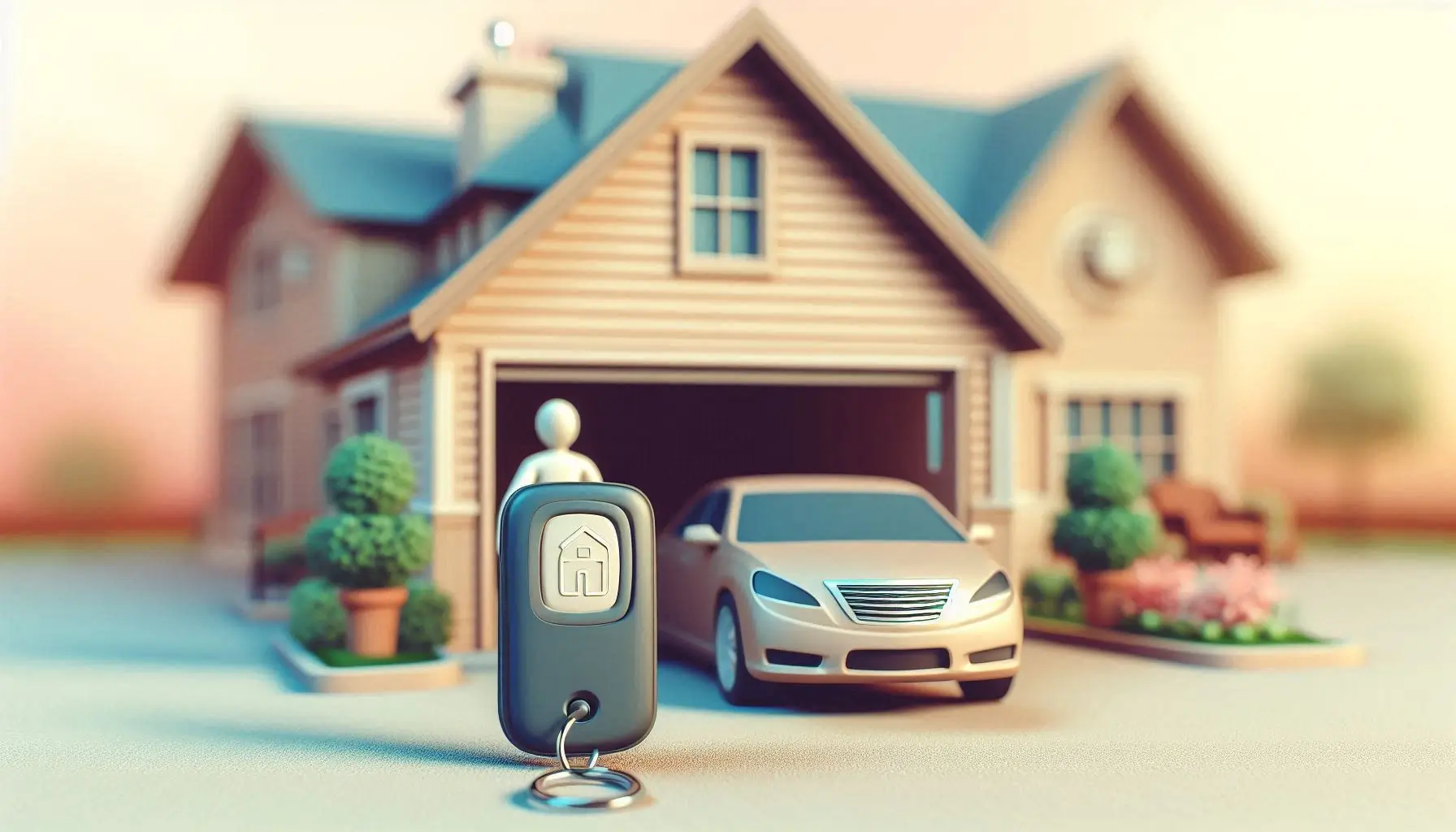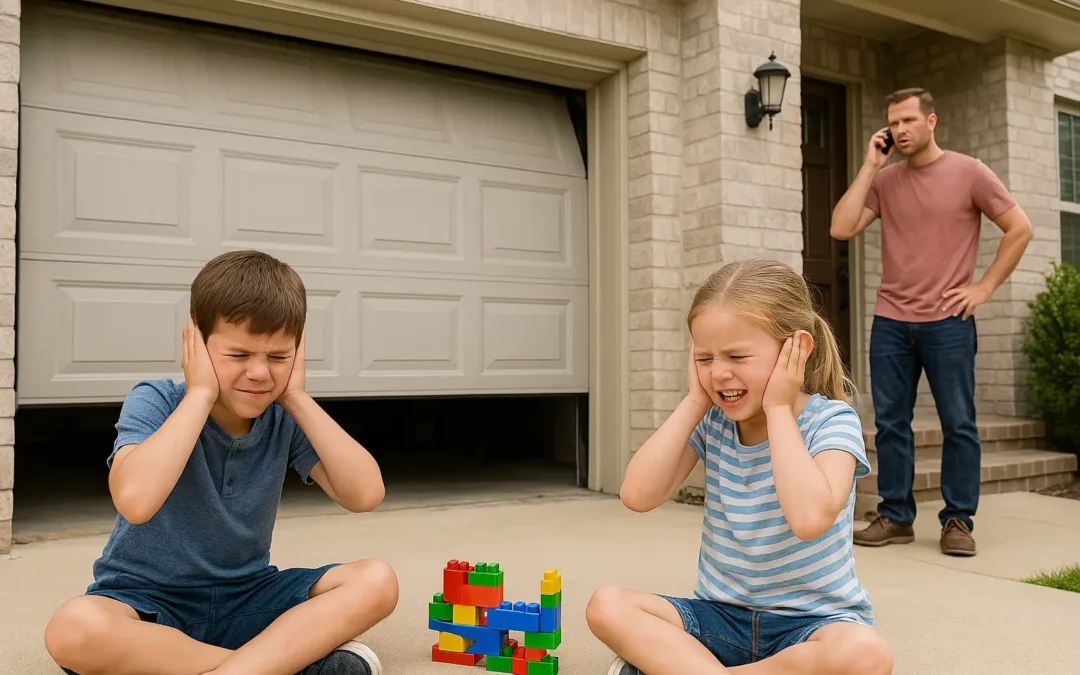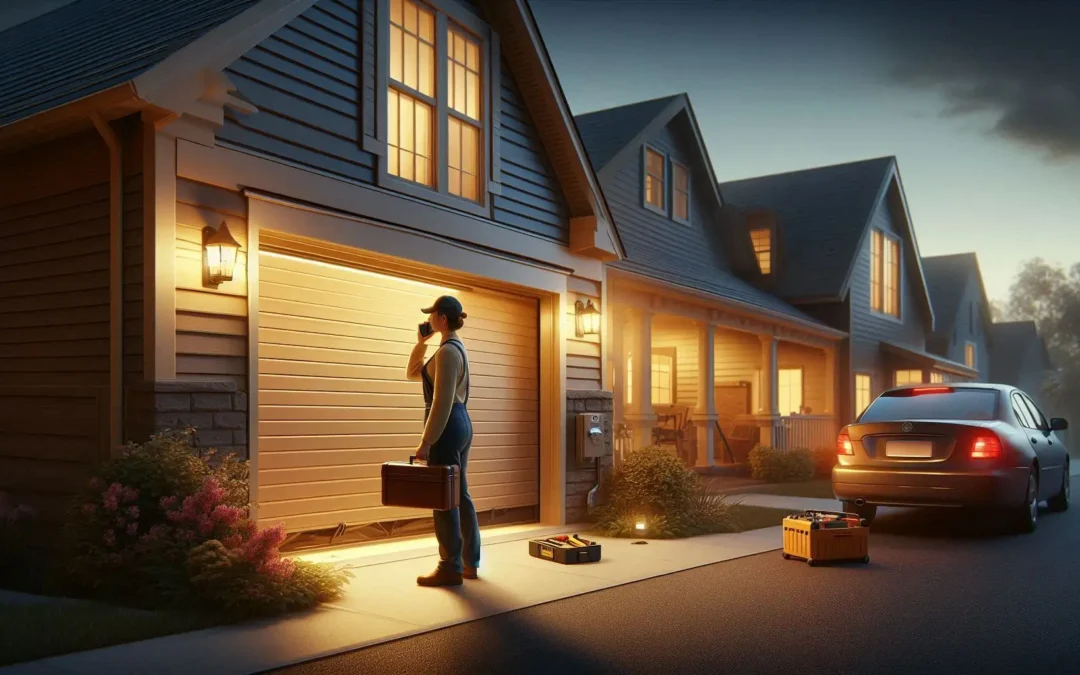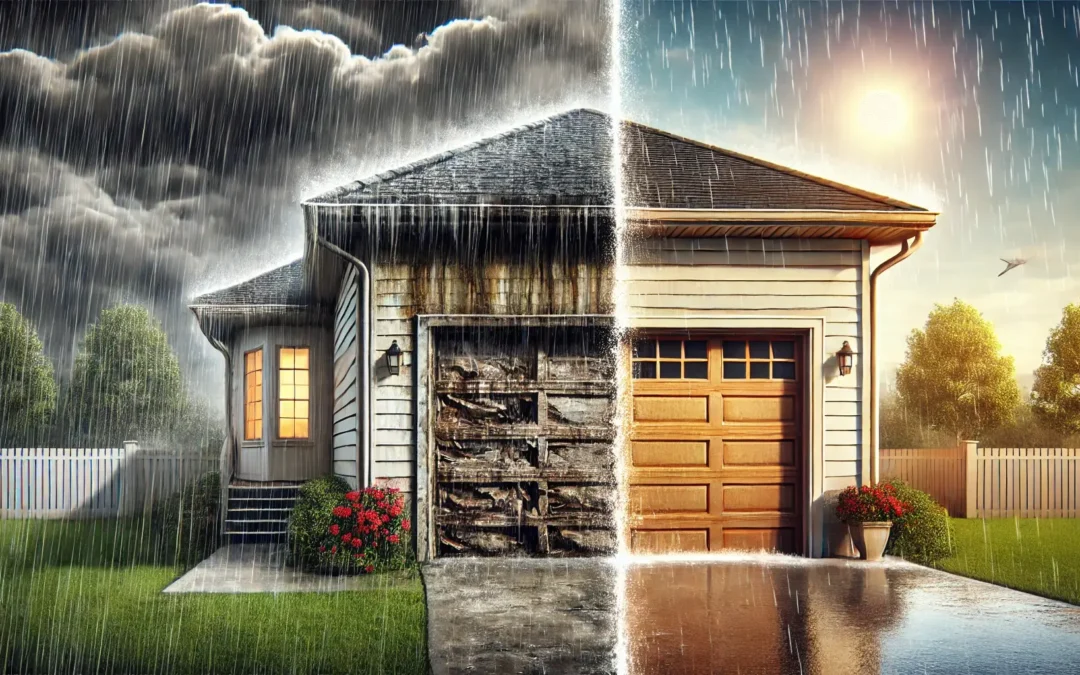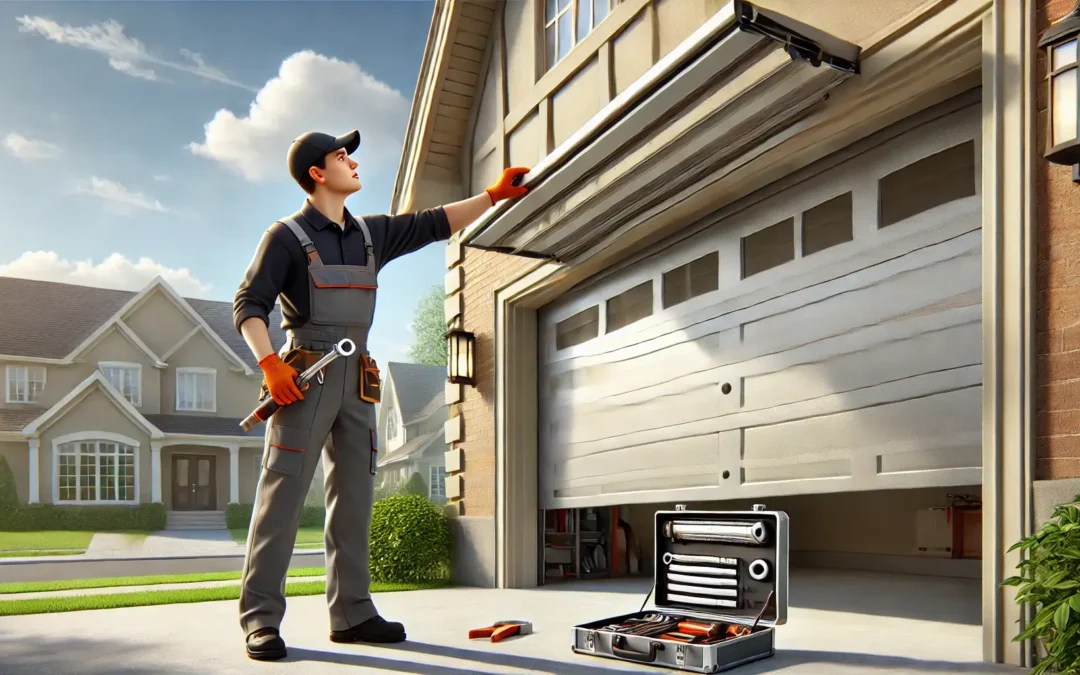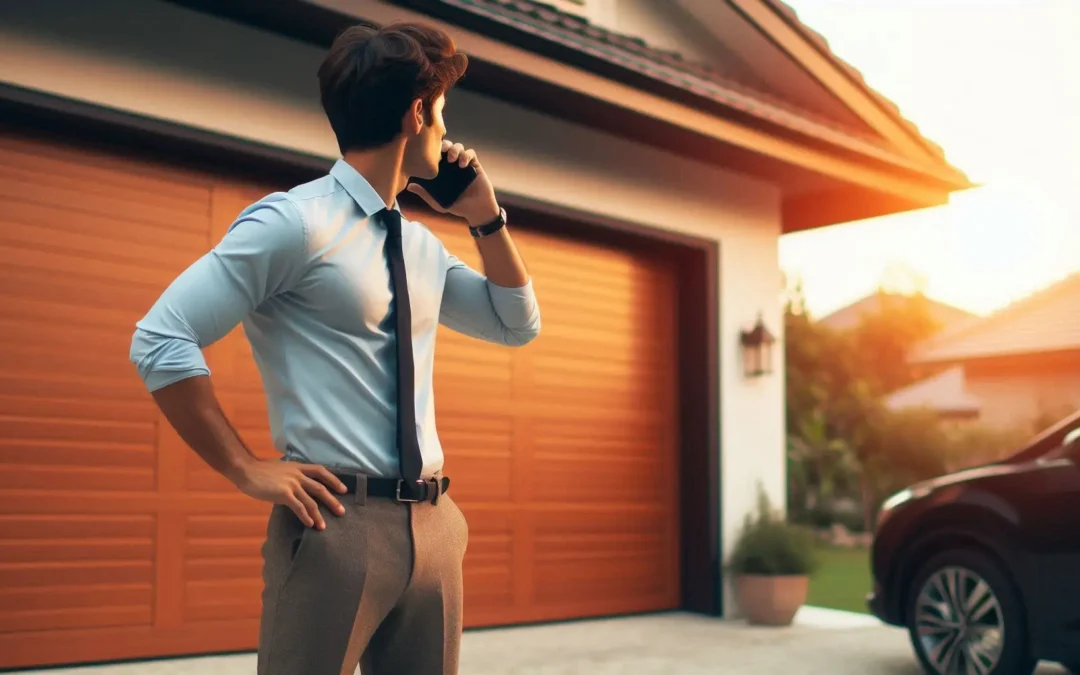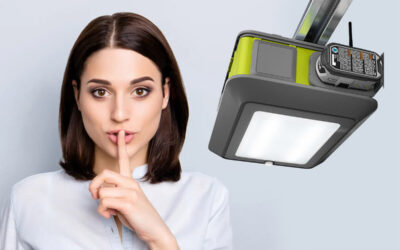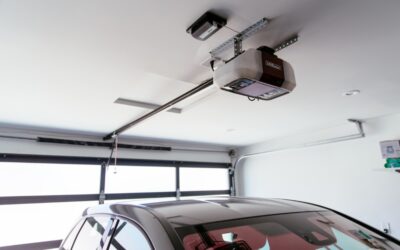The convenience of opening and closing your garage door with just the push of a button is undeniable. However, understanding the most common mistakes when using universal garage remotes and how to avoid them is an important topic that many users should consider. Knowing how to identify and fix these mistakes can not only save you time but also prevent unnecessary inconvenience and expenses.
What are universal garage remotes?
Universal garage remotes are devices designed to be compatible with a wide variety of garage door opening systems. Unlike brand-specific remotes, universal ones offer the flexibility to be programmed to work with different door models. One of the most common types is the self-copying universal garage remote, which allows you to copy the signal from your original remote and replicate it to control the door.
Mistake 1: Incorrect configuration of the universal remote
One of the most common mistakes is the incorrect configuration of the universal remote. This happens when the programming instructions aren’t followed properly, leading to the remote not working or not syncing correctly with the garage door.
How to avoid this mistake:
- Read the instructions: Before attempting to program the remote, it’s crucial to read and understand the instructions provided by the manufacturer. Each model has a specific setup process.
- Programming process: Follow the programming process step by step. For remotes like the 4-button universal garage remote, this process usually involves syncing with the door signal.
- Testing: After setting up the remote, test it to ensure it’s working properly.
Mistake 2: Choosing a model incompatible with your receiver
Another common mistake is selecting a universal garage remote that is incompatible with your door system. Not all remotes are compatible with all systems, and choosing the wrong one can result in malfunction or even inability to program it.
How to avoid this mistake:
- Check compatibility: Before purchasing a universal remote, make sure it’s compatible with your garage door system. Manufacturers usually provide a list of brands and models their remotes are compatible with.
- Self-copying universal garage remote: Consider the option of a self-copying remote, as this type can replicate the signal from your original remote, increasing the likelihood of compatibility.
Mistake 3: Not reading the manufacturer’s instructions
One of the most underestimated mistakes when using universal garage remotes is not reading the manufacturer’s instructions. Most users assume that all universal remotes work the same way and can be programmed without following the directions. However, each model has its own setup process and quirks.
Consequences of ignoring the instructions:
- Programming failure: The remote may not program correctly, resulting in ineffective or no operation.
- Missed features: Some remotes have additional features, such as the ability to control multiple doors or adjust the frequency signal. Ignoring the instructions means missing out on these functionalities.
Best practices:
- Read before programming: Take a few minutes to read the manual before you even start programming the remote.
- Follow the steps exactly: Ensure that you follow each step in the order specified by the manufacturer.
Mistake 4: Not changing the batteries on time
A simple but common mistake that causes universal garage remote failures is dead batteries. This can lead to the false conclusion that the remote is broken or misconfigured. Batteries that aren’t changed in time can cause intermittent problems, making the remote work inconsistently.
How to identify the problem:
- Slow or intermittent response: If the remote only works occasionally or has a delayed response, it may indicate that the batteries are running low.
- Low battery indicator: Some universal garage remotes have a low battery indicator that flashes when it’s time to replace the batteries.
Tips for battery maintenance:
- Replace the batteries regularly: Do it at least once a year, even if the remote seems to be working fine.
- Keep spare batteries: Always have spare batteries on hand to avoid unexpected problems.
Mistake 5: Interference and limited range
Electronic interference and the limited range of the universal garage remote can cause operational problems. These interferences may come from other electronic devices like Wi-Fi routers, mobile phones, or even other radio signals in the area.
How to optimize range and minimize interference:
- Receiver location: Ensure that the garage receiver is placed in an unobstructed location and away from other electronic devices that may cause interference.
- Use signal extenders: Some remotes allow for the installation of signal extenders to improve range.
- Proper frequency: When programming the remote, ensure it’s set to operate at the correct frequency for your garage.
How to correctly program a universal garage remote
Programming a universal garage remote isn’t as complicated as it seems, but it’s essential to do it correctly to avoid future problems. Here’s how to program a 4-button universal garage remote and similar models:
- Read the instructions: Always start by reading the manufacturer’s instructions. Each remote has a specific programming process.
- Enter programming mode: Most universal remotes have a programming button that you need to press until an LED blinks.
- Sync with the receiver: Press and hold the button on the remote that you want to program until the garage door responds, indicating it has synced correctly.
- Test the remote: Once programmed, test the remote several times to ensure it’s working correctly.
Precautions:
- Time limit: Some remotes have a time limit for programming, so it’s important to be quick and follow the instructions precisely.
- Programming multiple buttons: If your remote has multiple buttons, like the 4-button universal garage remote, repeat the process for each button.
Maintenance and best practices
Regular maintenance of your universal garage remote is key to ensuring its proper function and prolonging its lifespan. A well-maintained remote will not only allow you to open and close your garage without issues but also prevent possible failures at the most inconvenient times.
Maintenance tips:
- Regular cleaning: Keep the remote clean and free of dust. Dirt can accumulate in the buttons and affect its performance. Use a soft, dry cloth to clean it.
- Avoid drops: Garage remotes, like any electronic device, are susceptible to damage from falls. Try not to drop it or hit it against hard surfaces.
- Protect from moisture: Remotes are not designed to withstand moisture. Avoid leaving them exposed to rain or in places where they can get wet, as water can damage the internal circuits.
- Check the batteries: As mentioned earlier, regularly check the batteries and replace them if necessary. Don’t wait for the remote to stop working to do so.
Advantages of preventive maintenance:
- Extends the remote’s lifespan: A well-maintained remote can last many years without issues.
- Optimal performance: You’ll avoid unexpected problems and ensure that the remote is always ready to use.
- Cost savings: Keeping your remote in good condition prevents the need to replace it frequently, which translates into long-term savings.
Common troubleshooting for universal garage remotes
Despite taking all precautions, it’s possible that the universal garage remote may stop working correctly at some point. Here are some steps to troubleshoot common issues:
Problem: The remote doesn’t work after programming
- Check the programming: Make sure you’ve followed all the programming steps correctly. Repeat the process if necessary.
- Check the batteries: Verify that the batteries are properly installed and have enough charge. Replace them if needed.
- Reset the remote: Some remotes have a reset process that can help resolve issues. Check the manufacturer’s instructions for how to do this.
Problem: Limited range or weak signal
- Interference: Check if any nearby electronic devices are causing interference. Try changing the location of the receiver or removing nearby devices.
- Relocate the receiver: If the garage receiver is in an unfavorable location, such as behind metal objects or in a distant corner, try moving it to a more open area to improve the signal.
When to seek professional help
- Persistent problems: If the remote still isn’t working correctly after troubleshooting, it may be time to contact a professional.
- Need for a new remote: In some cases, the remote may be defective or incompatible with your system. A professional can help you select and program a new remote.
Conclusion
Avoiding the most common mistakes when using universal garage remotes is essential to ensuring their proper function and preventing inconveniences. From incorrect configuration to not changing the batteries in time, these mistakes can cause anything from minor annoyances to complete remote failure. However, by following best practices and performing proper maintenance, you can enjoy a universal garage remote that works optimally for a long time.
Correct programming, choosing the right model, and regular maintenance are the pillars for keeping your garage remote in perfect condition. Don’t forget that if you encounter persistent problems, seeking professional help can save you time and money.
Frequently asked questions
Why doesn’t my universal remote work after programming?
You may not have followed the programming steps correctly. Check the manufacturer’s manual and repeat the process. Make sure the remote is compatible with your garage system and that the batteries are in good condition.
How can I improve the range of my garage remote?
To improve the range, make sure there are no electronic interferences near the garage receiver. Also, check the receiver’s location; if possible, place it in a more open area free of obstacles.
How long do the batteries last in a universal garage remote?
Battery life depends on usage and the type of remote. Generally, batteries last between 1 and 2 years. It’s recommended to change them at least once a year to ensure optimal performance.
Can a universal remote be used with any garage brand?
Universal remotes are designed to be compatible with a wide variety of brands, but not all. Before purchasing a universal remote, verify that it’s compatible with your garage system by checking the manufacturer’s specifications.
What should I do if the remote’s buttons stick or don’t respond?
First, clean the remote with a soft, dry cloth to remove dust or dirt that may be affecting the buttons. If the problem persists, it could be a mechanical issue, in which case replacing the remote might be necessary.
If you need help with programming, installation, or maintenance of your universal garage remote, TAC Overhead Door, based in Houston, is here to help. We have trained professionals who will advise you and guarantee quality service. Contact us today to ensure your garage remote works perfectly!

